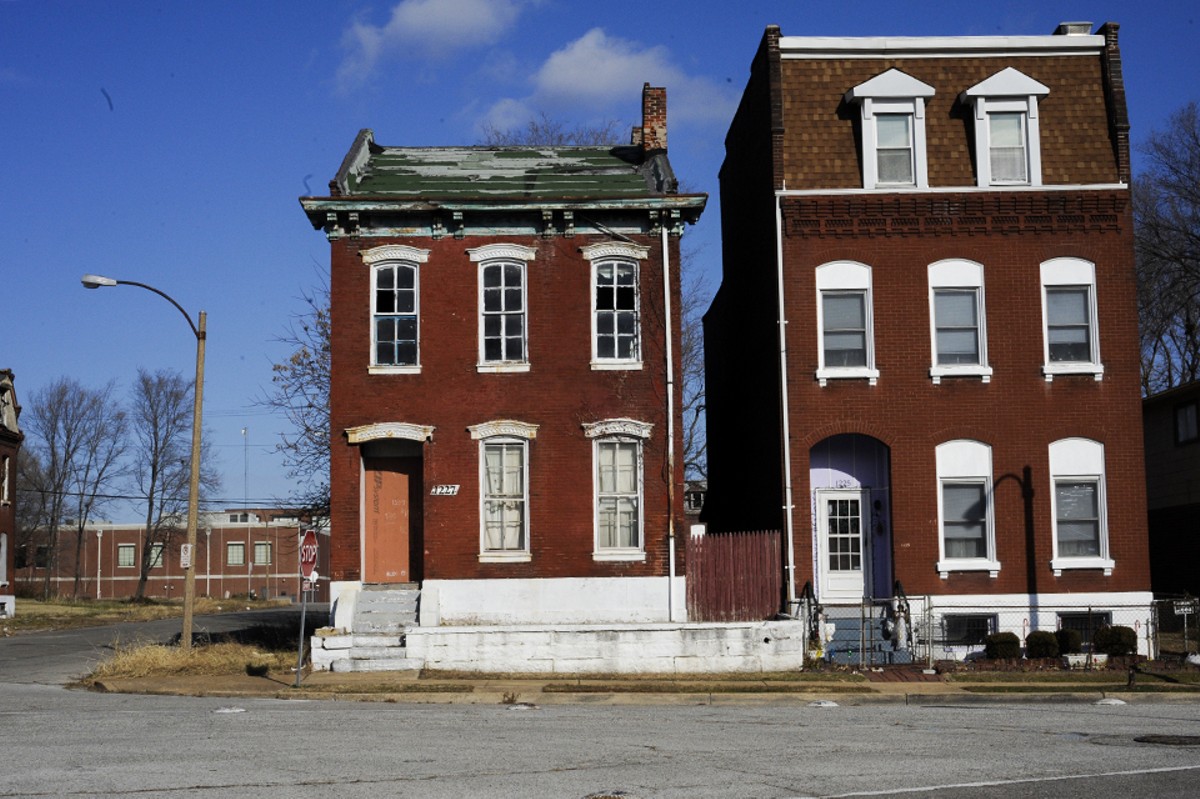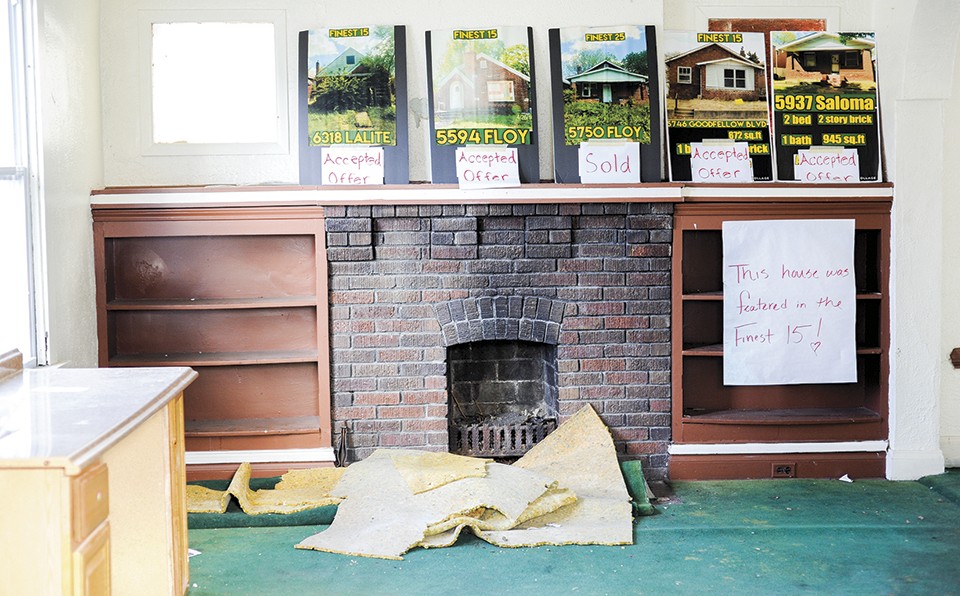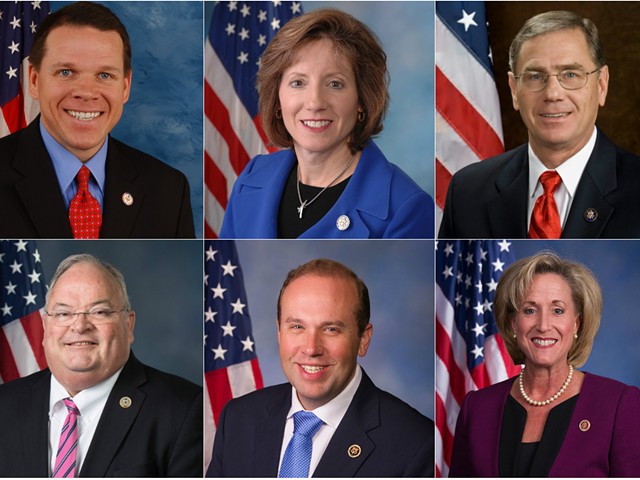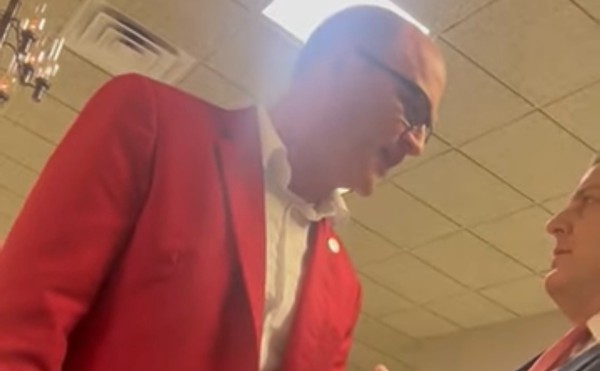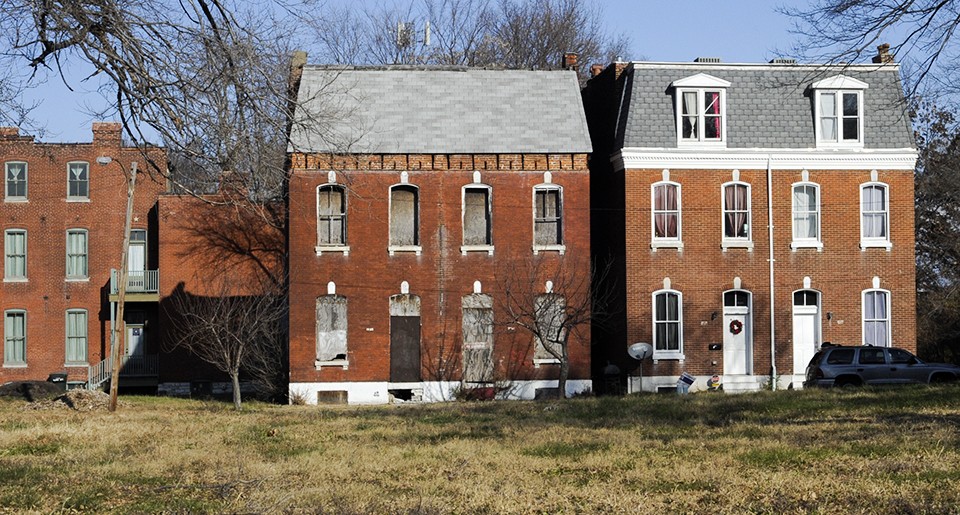
The LRA office isn't in City Hall — it's two streets over on the second floor of 1520 Market Street in the SLDC office. In an uncomfortably warm meeting room with pea green walls, Laura Costello, who effectively serves as the LRA's director but whose actual title is "director of real estate" for the SLDC, reviews printouts of a PowerPoint. She prepared it a couple months ago for SLACO and believes it provides a good overview of her agency's functions.
"LRA has never received an offer, or expression of interest, on 46 percent of its inventory," Costello says. "And that defeats the theory of people saying, 'Why doesn't LRA just give their property away?' — 50 percent of it no one would take anyway." Included in the agency's roughly 11,800 parcels of inventory are 70 billboards, two cemeteries and 15 former gas stations.
Repeatedly, Costello notes that LRA is not a branch of city government and that the city doesn't own the vacant lots in LRA's inventory.
"People say the city of St. Louis owns it," Costello says. "The city does own property, but not the LRA property."
And that distinction, while seemingly unimportant to people looking for real estate to buy, can mean significant expense for an agency trying to manage a massive portfolio of property.
Costello notes that the LRA pays Forestry $225,000 annually for maintenance. (Viewed in a certain light, that's a bargain: the city reports in response to a Sunshine Law request that Forestry actually spent nearly $3.2 million to maintain LRA properties in fiscal year 2017.)
Costello is defensive when she stops reviewing the PowerPoints. She won't answer simple questions like, "Could you tell me how you started working with SLACO?" or, "What do you think the purpose of a land bank is?" until she can ascertain the motives behind them.
Costello is also notoriously difficult to contact and seldom gives interviews. It took multiple requests over two weeks for her to agree to this one (although, to her credit, she came back early from a vacation to make it happen).
Costello has been with the LRA since 2006. And she understands her agency is now in the hot seat. Since Mayor Krewson took office, Costello says the mayor calls regularly for updates and wants buyers to be able to apply for property online.
"The mayor believes that the vacancy contributes to crime, so she is pushing constantly for us to work on all the strategies provided to us by these two reports," Costello says.
Costello says the mission of the LRA is "to return the land to effective reuse" and that the agency is meeting that purpose. Asked for its vision, she cites the study released in February.
"Right now I would say our biggest guideline would be the Asakura Robinson strategy," Costello says. "We worked with them for a year putting that strategy together. So that's the vision I see."
Costello says improvements that have already been made include a report on the cost of vacancy, updates to the website and a policy-and-procedures manual that is almost complete.
One reason the public may perceive the LRA as slow, Costello says, is that its seven employees have huge caseloads, and buyers don't always show up for their appointments.
"If our woman that takes the application, if she has eight appointments scheduled that she gets ready for, she gets all the paperwork ready for someone to make an offer on the property, four will show up," Costello says. "If she has six closings scheduled, closings — we have the deeds, we have the title work, we have the transfer deeds, the quitclaim, everything needed, the closing statements dated for that day, everything — if she has six closings scheduled today, three won't show up."
The LRA is currently searching for another real estate specialist and expects to hire a vacancy specialist by the end of the year.
"People think that the LRA is the problem," Costello says. "The problem is everything else that led that property to be abandoned to begin with. Now someone has a face on that property, they have a phone number on that property. They can call and complain and get the grass cut and the board up. And so with that comes the blame of the property. So I guess I wish people knew that LRA isn't the problem, the problem started years before it came into our inventory."
She adds, "We're not the enemy. We're the owner of last resort."
Where the LRA has fallen short, SLACO has been trying to fill in the gaps.
The neighborhood group helped put Proposition NS on the April ballot. A one-cent property tax increase per $100 value, the proposition would have allowed St. Louis to sell up to $40 million in bonds, then use up to $30,000 per home ($50,000 for multi-family properties) to fix them up for sale.
Due to some quirks of election law, it's still not clear if the measure has passed. (The lawyers are still arguing.)
But even without that financial infusion, SLACO is still doing what it can to combat vacancy. Its LRA subcommittee has recently started holding workshops called the Finest 15 — showcasing the best fifteen homes in specific neighborhoods and educating people about the process of buying LRA-owned property.
When LRA subcommittee members approached Costello this year about working with them, they found a willing partner. Angela Drake is the secretary for SLACO's executive board. She sits on the vacancy committee and co-chairs the LRA subcommittee.
"We had a meeting with Laura," Drake remembers. "We sat down, we talked with her, we explained to her what we wanted to do. She was very helpful. She told us that whatever she could help us with, she was all for. Anything to help get an LRA home sold and get it back on the tax roll."
Drake insists that buying property from the LRA is not as difficult as others may claim. She says, "We always tell people, keep it basic: ID, bank statements, past two year tax returns and create a budget."

